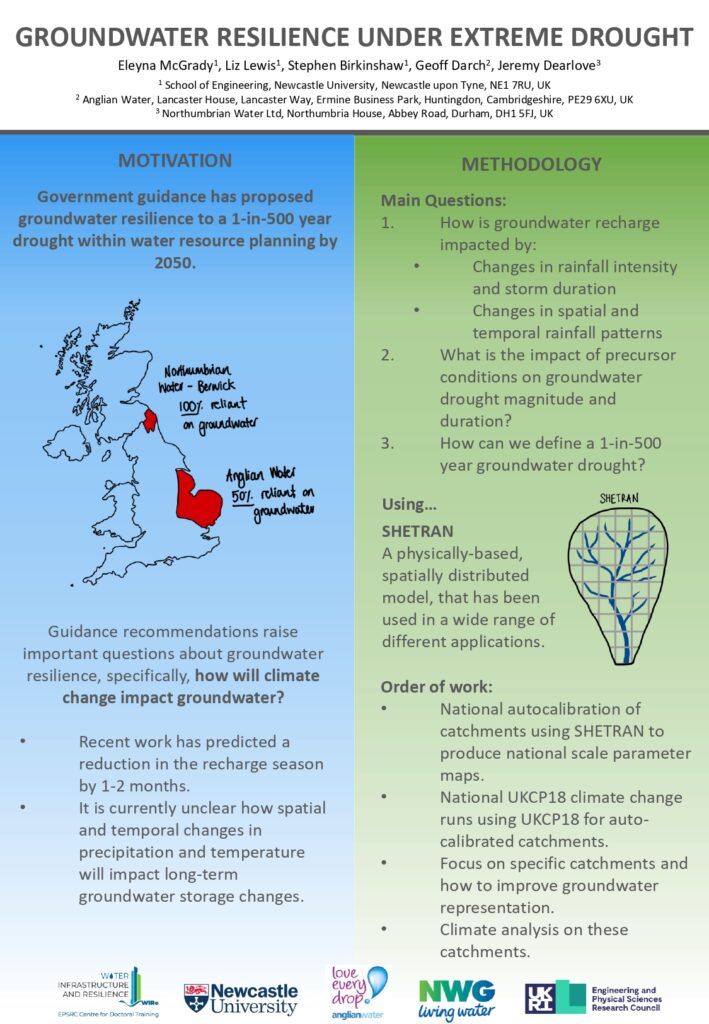Meet Eleyna McGrady
Email: Eleyna.McGrady@cdtwire.com
Academic and Industrial affiliations: Newcastle University, Anglian Water, Northumbrian Water
Title of research project: Resilience of Groundwater Resource under Severe Drought

One of the dominating interests of water managers globally is the ability to predict the next major drought. However, drought is poorly defined with no universally accepted definition. This is due to several reasons. Firstly, drought is often the result of many complex processes acting on and within the environment. Secondly, drought is not a distinct event unlike a flood, and does not have a clear beginning and end as it is often interrupted with temporary periods of wetness. Therefore, drought is usually only recognisable after a period of time, and therefore can be difficult to predict before it is already happening. The impact of drought on groundwater is of particular importance as groundwater resources provide almost 50% of the global drinking water supply. Groundwater resources not only play an important role in meeting drinking water demand, it also is an important source of water for agricultural irrigation and to baseflow-fed rivers, lakes, and dependent ecosystems, maintaining flow during surface-water droughts. Consequently, due to the significance and reliance on groundwater resources, the impact of drought affecting them is a major concern and threat to water security, which needs to be addressed imminently.
Whilst modelling is an important process to understand the dynamics of groundwater under drought and the impacts it might create, model development has been focussed within specific fields and the integration of these separate models has been limited. Therefore, this project aims to address gaps in research and fully understand the response of groundwater resources to changing climate, the impact of pre-cursor conditions on drought magnitude and duration, and also aims to address a current issue which is the lack of an adequate model that can be used to consider and assess these issues. SHETRAN, a fully integrated, physically based, spatially distributed model, will be used throughout this project, focussing on areas of interest in the Chalk aquifer (Anglian Water) and the Fell Sandstone aquifer (Northumbrian Water).

